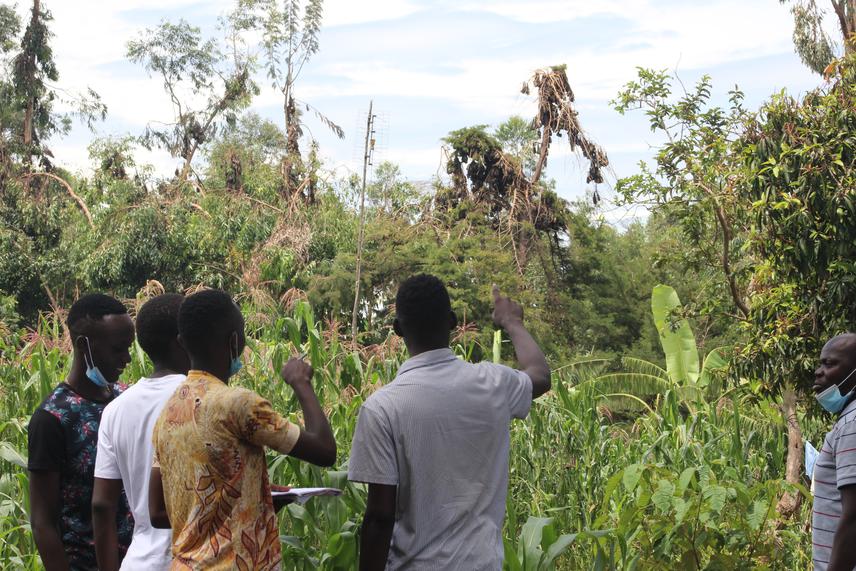Josephine Ambaisi
Straw colored fruit bats (Eidolon helvum) are keystone species for the maintenance and re-establishment of natural vegetation in the Old-World tropics (Fujita and Tuttle, 1991). Their role in seed dispersal and pollination is particularly important in tropical forest succession and vegetation dynamics (Fleming, 1982; Medellin and Gaona, 1999; Henry and Jouard, 2007). These species is listed as Near Threatened (NT) in the IUCN Red List because they are severely threatened by a combination of factors including, habitat loss, negative perceptions and myths surrounding them which leads to their decrease in their numbers in Western circuit (Mickleburgh et al., 2008).

Maseno bat club members counting bats at a private farm.
In Kenya, only a few colonies of E. helvum are known. One of the largest is in Vihiga County 30 km away from the Kakamega rainforest. The role of E. helvum in the dispersal of seeds and pollination of flowers of many plants in western Kenya is vital. There’s little information about Eidolon helvum because they are understudied species in Kenya, these study aims at enhancing awareness among local schools as community educators on ecological roles of bats and their contribution to ecosystems, thus helping to demystify long standing harmful local myths and traditions regarding the bats, improving capacity of local schools to monitor Eidolon helvum and their habitat to pilot establishment of a long term community based monitoring protocol, enhancing local understanding on ecosystem use/changes vis-a-vis species distribution, increasing local schools’ virtual interaction and sharing of important information/ data from periodic monitoring activities to prompt local and global action for the Eidolon helvum conservation, publishing findings in international peer reviewed journals to make the findings of this research known to others and through this study I will develop a software that will be used in monitoring bats globally. Additionally, citizen science in schools will help enlighten the communities living around the bats roosting sites on the importance of bats in the ecosystem.